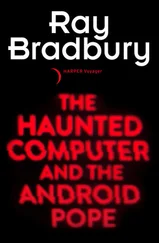When I talked to Hoshi about his association with Nishi and Gunji, he told me that the less-than-amiable rivalry between him and the other two competitors dates back to the time Nishi and Gunji worked for I/O. The story Hoshi told me is hard to believe in the context of normal, tough-but-polite Japanese business, and even in the context of the most cutthroat American businesses. Nevertheless, I’m not close enough to the situation to be able to make a judgment about which party’s story is accurate.
According to Hoshi, Nishi and Gunji took advantage of a time during which he left them in charge of his magazine while he was gone for a while to attend a wedding. In his absence, he alleges, they announced to subscribers that the I/O offices were moving. When Hoshi called to see how they were managing the business, they assured him that everything was fine. When Hoshi returned, he claims, he discovered that his former volunteers had set up their own magazine—located at the new address they had sent to I/O subscribers!
Nishi and Gunji’s new magazine, started in 1977 and named ASCII —which stands for American Standard Computer Information Interchange, a code used to represent alphanumeric characters in microcomputers—was also an immediate success, and they soon branched out into software production and distribution as well as into other magazines. By the end of 1984, ASCII rivaled Hudson Soft in size as a software producer, with approximately $20 million annual sales from its magazine and its software.
As for the circumstances preceding ASCII’s formation, Nishi of course tells a different story. In all fairness, I must state that I did not interview Nishi about this matter, but it is a matter of public record that in the August 1984 issue of Creative Computing magazine, Nishi was quoted as saying that he “decided to publish a magazine of games and other electronic products. That was my first magazine, I/O, which is today primarily a hobby magazine.” In other words, according to that interview Nishi claims total credit for starting I/O as well as ASCII magazine.
Like many of the microcomputer entrepreneurs in the United States—Steve Jobs, Steve Wozniak, and Bill Gates, for example, who were each personally worth hundreds of millions of dollars before the age of thirty—Nishi was a college dropout. In Japan, however, dropping out of college is not taken as casually by the student or the whole society as it is in the United States. Instead, most of Japan’s young people devote years of their lives to preparing for the entrance exam for the top schools that will help them obtain lifetime jobs as employees of any one of the large companies in the country. In addition, a large number of the major entrepreneurs in Japan all come from families whose businesses stretch back hundreds of years, and who have established a tradition in which wildcatters are discouraged. A dropout wildcatter like Nishi, then, is doubly rare.
Gunji is very much an active partner in ASCII, but Nishi is the one who attracts all the public attention, both positive and negative. Because of his aggressive, almost “Western” approach to doing business, “Kay” Nishi ruffles feathers here and there in the Japanese microcomputer industry. He made an audacious move early in his career, one that contributed greatly to ASCII’s growth and that also made him one of the few Japanese software people who are well known in the American microcomputer industry. Nishi did something a traditional Japanese businessman would never do—he made a cold phone call to a foreign country, then followed up a rebuff with an unannounced visit.
Nishi was just beginning to get into software design, which meant that he needed a BASIC interpreter. At that time, August 1977, the best known BASIC interpreter available for microcomputers was sold by a company that had just changed its name to Microsoft and was then located in Albuquerque, New Mexico. (This was not long after the era when Gates and Allen were the software arm of MITS, creating software for the Altair.) Nishi called Albuquerque and asked for the president of the company, which got him to Bill Gates. In the course of the conversation, Nishi strongly suggested that Gates come to Japan immediately to join Nishi in the software business. Gates declined. So Nishi flew to New Mexico and literally showed up at Gates’s doorstep.
Gates still didn’t want to do business, but he eventually succumbed to Nishi’s persuasive frontal assault—and Bill Gates is hardly what you would call a pushover for a sales pitch. By late 1978, Gates and Nishi had a contract with one of Japan’s largest hardware manufacturers—NEC—to design the hardware and software for the NEC PC-8000. It was a phenomenally successful product launching. Nishi now sits on the board of Microsoft and has another company in Japan, unrelated to ASCII magazine, called ASCII-Microsoft.
Nishi has long been a legend in the American microcomputer industry. One of the most often-repeated Nishi stories is about the time he described to the person sitting next to him on an airplane flight what his “dream computer” would be. The fellow passenger turned out to be the president of Tandy, the company that owned Radio Shack, the manufacturers of TRS-80 microcomputers. Their airborne discussion led to the design and production of the first and extremely successful “laptop computer”—the Radio Shack Model 100. In general, Nishi stories all seem to be related to the fact that he spends so much time in the air. He virtually commutes between
Tokyo and Seattle (site of Microsoft’s suburban Bellevue headquarters), and chief executives of American computer companies have been known to get on planes to Tokyo and then Seattle in order to have a business meeting with Nishi, literally “on the fly.”
Perhaps it is not so much that Nishi’s style is “Western” in its outlook but that he sees things as a “hobbyist.” In Japan, as in the United States, microcomputers were never of much interest to the management of established computer companies until enthusiasts like Nishi—whose efforts matched those of his American counterparts Wozniak, Jobs, Gates, Kapor, and others—started industries of their own. To me, this indicates that the key cultural divisions in the microcomputer world might have less to do with nationality than with personal orientation to the technology. In my opinion, if you want to find out whom you are dealing with, the first thing to know about a microcomputer company, either Japanese or American, is whether the founder ever spent time working and playing with computers for the sheer intellectual thrill of it, or whether he sees computers as “consumer electronics”—just another product to sell, like so many bars of soap.
The prevailing wisdom in the microcomputer industry has been that Japan is a formidable competitor in electronics in general and in the production of mainframe computers, but that the Japanese are far less formidable in the microcomputer field—and when it comes to microcomputer software their significance has been as a market for U.S. products rather than as a potential competitor on the world market. The facts, as evidenced by the absence of Japanese software from any of the charts, certainly seem to support this case—for the present, and perhaps for the intermediate future. But I’m sure there are people in the American steel, automobile, and consumer electronics industries—or who used to be in those industries—who would advise caution to anyone who discounts Japan’s role in the future of the software business.
One of my programmer friends was in a bit of a hurry as he drove me into Tokyo from Narita Airport one time, and he consistently exceeded the speed limit. At regular intervals the radar detector on his dashboard would sound an alarm and he would slow down. The one thing that puzzled me was that I never saw any police cars. Finally I asked him about it, and when we drove past a large metal box, fixed squarely in the middle of the concrete highway divider, he pointed to it by way of answering my question. It turns out that this box has made highway patrol cars virtually obsolete in Japan, at least as far as speed enforcement is concerned. The box automatically checks drivers’ speed by radar and photographs their license plate if they are going too fast. The ticket is then mailed to them. Low confrontation, high technology. I could see why such a system might appeal to people in Japan.
Читать дальше










